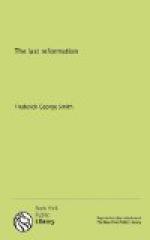[Sidenote: Wrong standard of church-membership]
Coincident with the creation of foreign ideals concerning church societies was the formation of of a foreign idea of church-membership and church-relationship. In the beginning, as we have shown, the church was simply the divine family. Therefore salvation through Christ was its sole condition of membership. “And the Lord added to them day by day those that were being saved” (Acts 2:47, R.V.). And as the local congregation was but the concrete expression of the ideals of the general body or church, that membership in Christ which made men members of the general body, made them, by a moral and spiritual law, members of all the other members of Christ, and therefore fixed their local relationship: they belonged by divine right with whichever company of believers they happened to be associated. Nothing more than simple recognition of what God had done for them and the according to them of the local rights and privileges that naturally belonged to them was necessary on the part of a local congregation to make the actual union complete.
The wrong conception of the constitution of the church necessarily required another standard of church-membership. When church came to signify merely a group of congregations consolidated under a centralized human headship possessing administrative, legislative, and judicial functions (so organized as to distinguish it from all other organized groups or congregations), simple membership in Christ was insufficient to mark the convert with the stamp of denominational individuality. Salvation itself made no one a member of a church fashioned according to the kingdoms of this world. Consequently another standard of membership was necessary, a standard which required acceptance of and conformity to the self-made rules and regulations of that foreign society called a church. And when these earth-born institutions became identified in the public mind with the real church of Christ and membership in them became confused with membership in the true church of God, the natural result was that millions complied, in a formal manner at least, with the conditions of the counterfeit church membership who never knew what it meant to be vitally joined to Christ. In this we see the “evil” fruit which grew on that tree of error. The multitudes that have been by this means deceived with the thought that they were Christians, only to be lost at last, will not be known until that awful day of final reckoning.
[Sidenote: Divisive nature of the creeds]
The formation of creeds tends to create division and to perpetuate division. Caesar’s maxim illustrates their history: “Soldiers will raise money, and money will make soldiers.” So creeds will make sects, and sects will make creeds. “A creed or confession of faith is an ecclesiastical document—the mind and will of some synod or council possessing authority—as a term of communion by which persons and opinions are to




